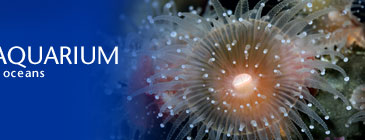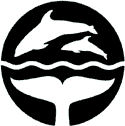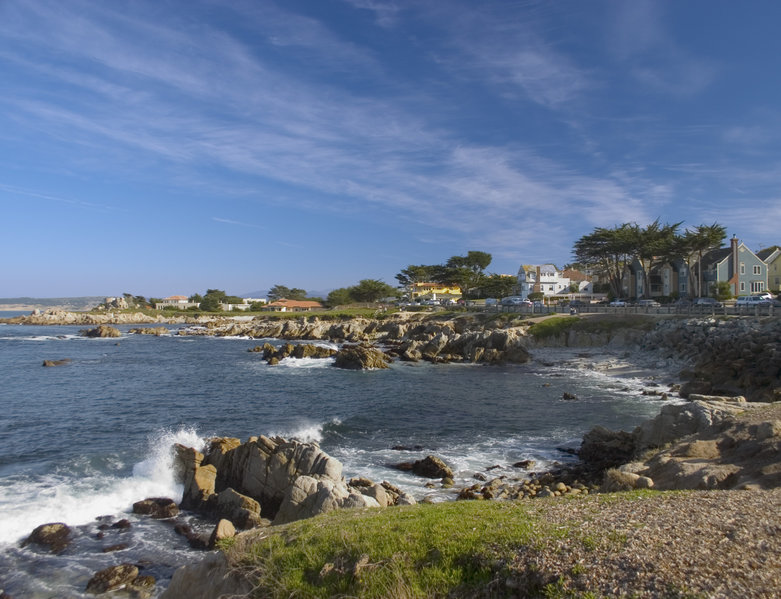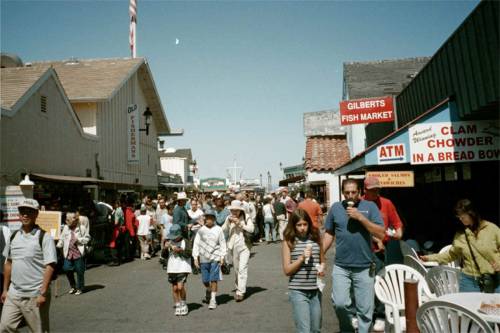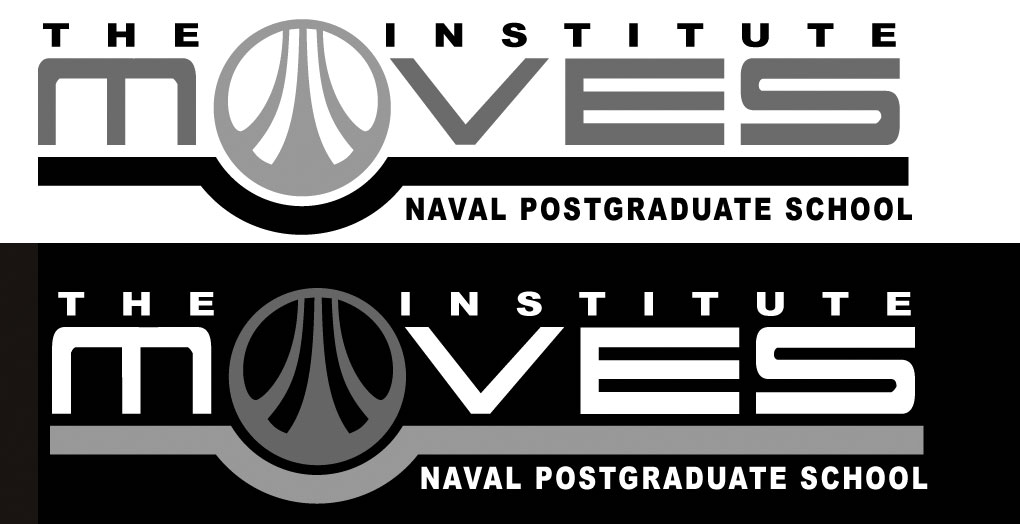Conference Venue
|
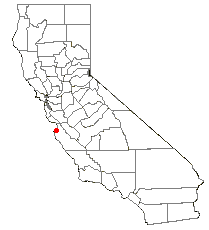
|
Described as the
greatest meeting of land and sea, Monterey County
encompasses some of California's most stunning scenery while
offering world-renowned Monterey Attractions and recreation.
From the dramatic Big Sur coastline to romantic Carmel and
Pebble Beach to historic Monterey and its diverse peninsula
communities, to the fertile Salinas Valley, Monterey County
offers a rich and complete variety of destinations for the
leisure or business traveler. A first-time trip to Monterey
County should include such sites as the Monterey Bay
Aquarium, Cannery Row, Fisherman's Wharf, 17-Mile Drive,
National Steinbeck Center, Elkhorn Slough and Monterey Wine
Country. |
| First established in 1770
by
Father Junípero Serra and
Gaspar de Portolà, Monterey served as the capital of
California from
1777 to
1849, under the flags of
Spain and
Mexico. It was also the site of the
July 7,
1846
Battle of Monterey during the
Mexican-American War. It was on this date that
John D. Sloat, commodore in the
United States Navy, raised the
U.S. flag over the Monterey Customs House and claimed
California for the United States. In addition, many
Californa "firsts" occurred in Monterey. These include
California's first theater, brick house, publically funded
school, public building, public library, and printing press.
California's first constitution was also drafted here in
October 1849. Monterey has a
rich history as a center for California painters in the late
19th and early 20th centuries. Such painters as
Arthur Frank Mathews,
Armin Hansen,
Xavier Martinez,
Rowena Meeks Abdy and
Percy Gray lived or visited to pursue painting in the
style of either
En plein air or
Tonalism.
|
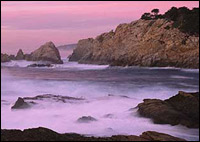
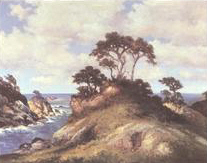 |
|
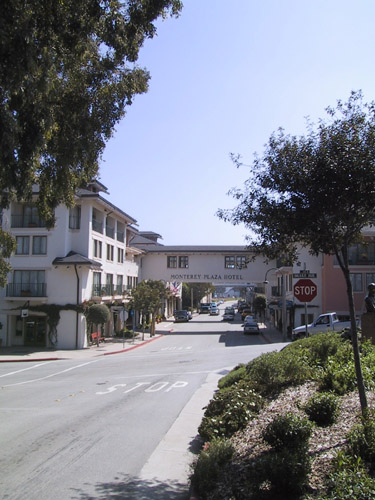 |
Monterey had long
been famous for the abundant fishery in
Monterey Bay. That changed in the
1950s, when the local fishery business collapsed due
to overfishing. The famous
Cannery Row has now been turned into a tourist
attraction, with restaurants and shops in the historical
site. It is also the location of the
Monterey Bay Aquarium.
The city is now famous for its abundant sea habitat,
including
kelp seaweed forests,
sea otters and
sea lions. The large diversity of sealife draws
thousands of
scuba divers each year to Monterey, which is
considered one of the best regions for the sport in
Northern California. |
| Monterey is also the
location of one of the largest aquariums in North
America,
Monterey Bay Aquarium, and hosts several important
marine science laboratories. Monterey's geographic
location gives scientists access to the deep sea within
hours. Just miles off the shores of Monterey is
Monterey Canyon, an
underwater canyon two miles deep.
The Larkin House, a part of the
Monterey State Historic Park and a
National Historic Landmark, was built in the Mexican
period by
Thomas Oliver Larkin and is an early example of
Monterey Colonial architecture. The Old Customhouse,
the Old Town Historic District, and the Royal Presidio
Chapel are also National Historic Landmarks. The Cooper-Molera
Adobe is a National Trust Historic Site.
Colton Hall, built in 1849 by
Walter Colton, was originally a public school and
government meeting place. It also hosted California's
first constitutional convention. Today it houses a
museum, while adjacent buildings serve as the seat of
local government.
|

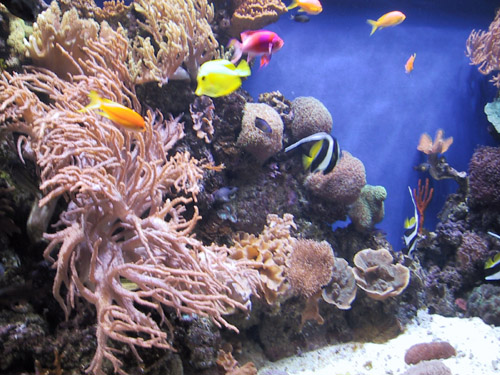
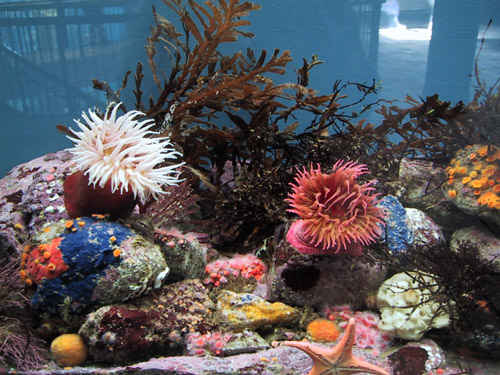 |
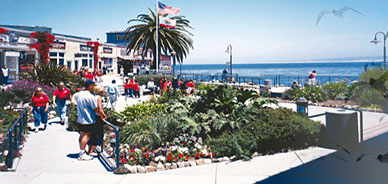
A view of Steinbeck Plaza
Conference
Site

The Naval Postgraduate School
|
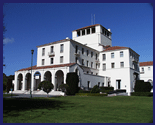
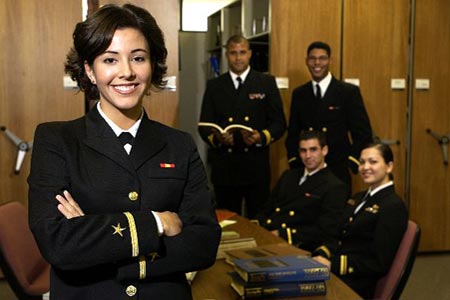
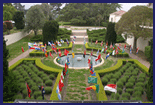 |
The School
The Naval Postgraduate School is an academic institution
whose emphasis is on study and research programs relevant to
the Navy's interests, as well as to the interests of other
arms of the Department of Defense. The programs are designed
to accommodate the unique requirements of the military.
The Campus
Located in Monterey, California, on the Pacific Ocean 120
miles south of San Francisco, the Naval Postgraduate School
campus covers 627 acres of land. The site, which has been
home to NPS since 1947, houses state-of-the-art
laboratories, numerous academic buildings, a great library,
government housing and impressive recreational facilities.
The Students
Nearly 1,500 students attend the Naval Postgraduate School.
The student body consists of officers from the five U.S.
uniformed services, officers from approximately 30 other
countries and a small number of civilian employees.
Selection of officers for fully funded graduate education is
based upon outstanding professional performance as an
officer, promotion potential and a strong academic
background.
The Faculty
The faculty, the majority of whom are civilians, are drawn
from a broad diversity of educational institutions and
represent a prestigious collection of scholars.
Faculty/student interaction is high. Every class is taught
directly by a faculty member--over 99% of whom have a Ph.D.
More information
about the history of NPS can be found on:
http://www.nps.edu/Aboutnps/Navigation/Heritage.html
|
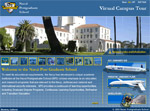
You can have a virtual tour of the
Naval Postgraduate School following this link:
http://www.nps.edu/Aboutnps/virtual_tour/NPSVirtualTour.html
|
You will be required to enter the Naval
Postgraduate School via the Main Gate on Del Monte
Avenue, where you will have to show either
your Driver's Licence, ID or Passport before
being allowed to enter the site. |
|
 |
How to reach
Monterey and the
Conference Site |
 |
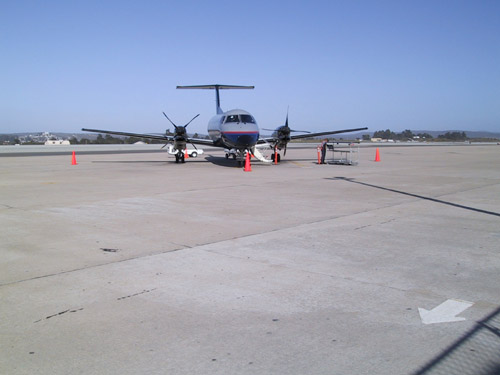 By Air
By Air |
Airports

Monterey is served by
Monterey Peninsula Airport
Flights with:
FOR MORE INFORMATION CONTACT:
American Eagle Airlines
Monterey
Peninsula Airport: Tel: (800) 433-7300
America West
Monterey
Peninsula Airport: Tel: (800) 235-9292
Monterey Peninsula Airport
Monterey
Peninsula Airport: Tel: (831) 648-7000
United Airlines
Monterey
Peninsula Airport: Tel:(800) 241-6522
From Monterey Peninsula
Airport
 |
| 1. |
Upon leaving immediate
vicinity of Passenger Terminal, Olmstead Road bears to the
right, away from runway. |
| 2. |
Take first right onto
Garden Road. |
| 3. |
Take Garden Road
westbound for approx. 2 miles to first stop light and make
a left onto Mark Thomas Drive. |
| 4. |
Proceed on Mark Thomas
Drive for approx. ¾ mile to first traffic light. |
| 5. |
Take a right onto
Sloat Avenue. |
| 6. |
Follow Sloat Avenue to
Del Monte Avenue. |
| 7. |
Turn right on Del
Monte Avenue and enter via the NPS main gate. |
|
2.5 miles (or 5 minutes)
Local Transportation - Government transportation
is not furnished from any of the above airports
to NPS. Taxi/shuttle service is available. Taxi -
metered rates apply... arrange for Monterey/Salinas shuttle
service if you fly into SFO or SJO). Cab fare from MRY to NPS is
$7.00. Shuttle - Monterey/Salinas Airbus
$30/person each way; 831.883.2871. (LINES 21 AND 3)
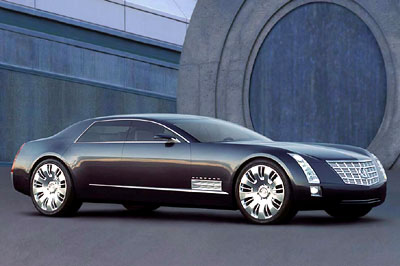 By Road
By Road |
By Car
From San Francisco and San
Jose
 |
| 1. |
Take US Route 101
South to Prunedale. |
| 2. |
At Prunedale, take CA
Route 156 (West) to CA Route 1 (South). |
| 3. |
Proceed on CA Route 1
(South) to Monterey. |
| 4. |
Take the "Del Monte
Avenue" exit. |
| 5. |
Follow the signs to
Del Monte Avenue and enter via the NPS main gate, located
on Del Monte Avenue. |
|
116 miles (or ~2hrs)
From Los Angeles and San Diego
 |
| 1. |
Take US Hwy 5 North to
Sacramento. |
| 2. |
At Lost Hills, take CA
Route 46 west to Paso Robles. |
| 3. |
At Paso Robles, take
US Route 101 north to Salinas. At Salinas, take CA Route
68 west to Monterey. |
| 4. |
Follow 68 to Monterey…
that is, stay left onto CA Route 1 (south). |
| 5. |
Immediately take the
“Monterey Exit” off of CA Route 1 (south). |
| 6. |
Stay in the left hand
lane of the exit. Turn left at the first light… onto
Aguajito Road. |
| 7. |
Follow Aguajito south
to and take a left at Mark Thomas Drive (approx. ½ mile). |
| 8. |
Follow Mark Thomas
Drive and take a left onto Sloat Avenue. |
| 9. |
Follow Sloat Avenue to
Del Monte Avenue. |
| 10. |
Turn right on Del
Monte Avenue and enter via the NPS main gate. |
|
335 miles (or 5.5hrs)
 By Train
By Train |
AMTRAK
455 Market Street, Suite 970
San Francisco, CA 94105
(800) USA-RAIL / (415) 546-4418
 You can download the present
time-schedule in pdf format here. You can download the present
time-schedule in pdf format here.
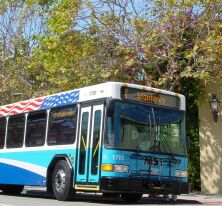 By Bus and Coach
By Bus and Coach |
Bus Service is provided by
Monterey Salinas Transit.
P.O. Box 2751
Monterey, CA 93942
(831) 373-7777
Car Rental
 Avis Cars
Avis Cars |
 Budget
Budget |
| |
|
|
 Hertz
Hertz |
 |
Thrifty |
|
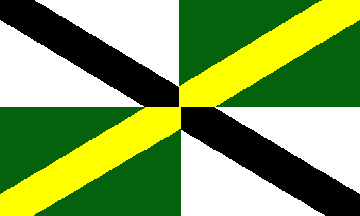 |
Other Monterey
Links |
 |

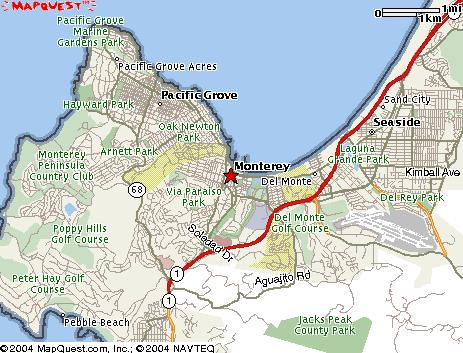
|
|
 |
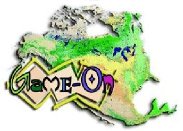




















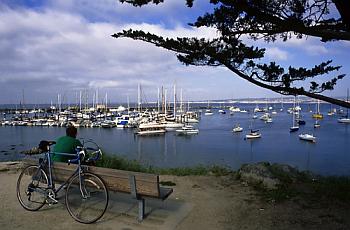

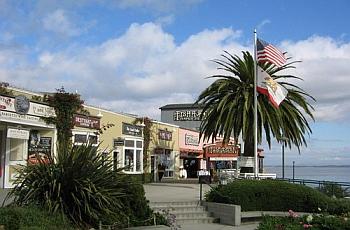


















 By Train
By Train





